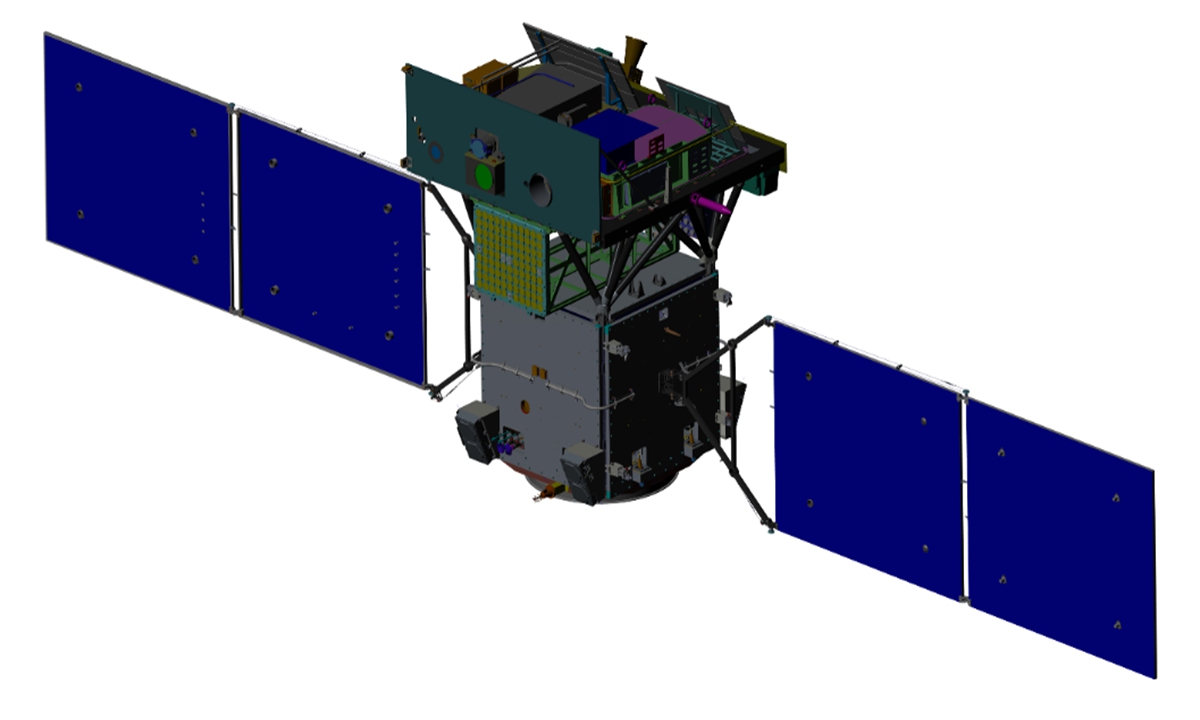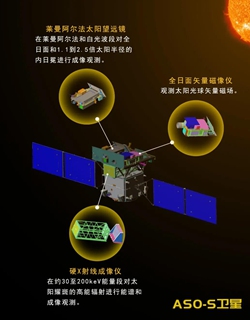China plans to launch first space-based Sun-observing satellite by 2022: chief scientist

Photo: Courtesy of Purple Mountain Observatory, CAS
Tests on the prototype of China's first space-borne comprehensive solar observation satellite will come close to completion by the end of January, and the spacecraft is expected to be launched by 2022, according to Gan Weimin, chief scientist with the program.
The satellite, codenamed Advanced Space-based Solar Observatory or ASO-S, is tasked with conducting long-term continuous solar observation for at least four years, and its main scientific goals include the formation of solar magnetic field, solar flare and titanic blasts known as coronal mass ejections, as well as their relationship in a simultaneous fashion, Gan, the program leader and research fellow with the Nanjing-based Purple Mountain Observatory under the Chinese Academy of Sciences (CAS), told the Global Times during an exclusive interview.
The simultaneous observations could yield clues as to how those eruptions are triggered, he noted.
To achieve the set goals, the ASO-S will carry three payloads onboard - the Lyman-alpha telescope (LST), Hard X-ray telescope (HXT) and Full-disk solar vector MagnetoGraph (FMG,) according to the observatory.
Due to the Earth's atmosphere, most solar radiation is absorbed before it reaches the ground, which is why in order to get a full spectrum of solar radiation, especially those with high energy such as X-ray and gamma ray, the solar observation platform needs to go to space, Gan explained, responding to questions from curious Chinese space enthusiasts on why we need to go to space for the solar mission.
China's solar research satellite will be working in the Earth's polar orbit some 720 kilometers above ground, so that it will be capable of conducting 24-hour continuous observation directly on the sun, with a rather short communication delay, according to Gan.
Also, as the Chinese probe is flying in an Earth orbit rather than a higher one, the satellite can carry heavier and therefore more powerful payloads. For example, the HXT onboard the ASO-S weighs over 160 kilograms, much heavier than the X-ray telescope carried by the European Space Agency's Solar Orbiter, which is about 6 kilograms.

Photo: Courtesy of Purple Mountain Observatory, CAS
NASA launched the Parker Solar Probe in 2018, which adopted a rather bold method of being the first to fly directly through the Sun's corona - the hazardous region of intense heat and solar radiation in the Sun's atmosphere that is visible during an eclipse.
But the US probe, admittedly revolutionary, cannot yet look into the sun directly all the time, as the telescope instruments cannot withstand the heat of over 5,000 C, therefore its observations will be not as continuous as the ASO-S', Gan said.
When asked why the Chinese scientists chose 2022 for the ASO-S launch, Gan said that 2022 would be the beginning of a new 11-year solar cycle, and the ASO-S will hopefully record rising stages of solar stormy activities and cover the peak period by around 2024-25, within the four years of designated operation life.
During the solar cycle, the Sun's stormy behavior builds to a maximum and its magnetic field reverses. Then, the Sun settles back down to a minimum before another cycle begins.
According to NASA, the Halloween Storms of 2003 "were the scariest of all," as the most powerful solar storms ever recorded led to incidents such as power outages in Sweden and GPS deviation on a global scale, and also affected satellite systems and communications.
Understanding the formation of and relationship between the solar magnetic field, solar flare and coronal mass ejections would help establish a space weather forecast system, which could report solar storms around two days in advance, Gan said.

